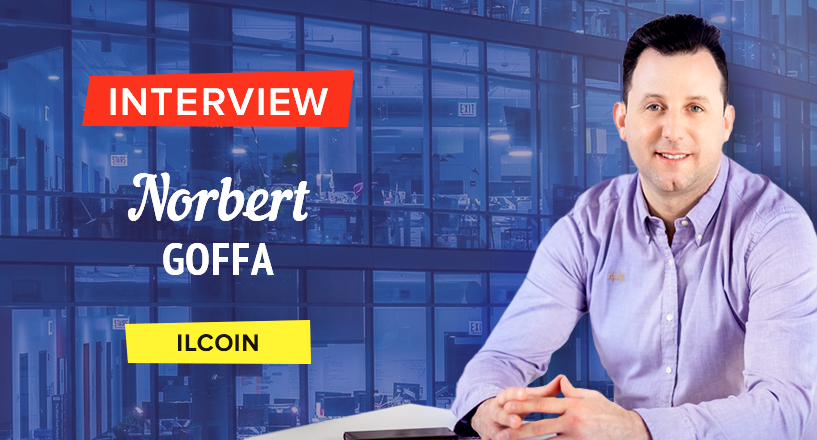Today, the term “blockchain” means much more than cryptocurrency and immutability. It means dApps, decentralization, and the foundation of what will likely be known as Web 3.0. But what is ILCOIN, and how does it contribute to Web 3.0?
That’s right, we do believe that the term Web 3.0 sounds great, although its practical implementation is still yet to come. One of the most essential aspects of the decentralized approach is security. It is only natural that the opportunity provided for everyone to freely join the network and make modifications brings about certain questions regarding safe and secure operation.
One of the most vulnerable segments of a decentralized system is the potential for abuse. This varies with every consensual solution, but we’re essentially talking about the same issue in every case. The other weak point is the lack of agreement induced by size. It’s enough to have a look at the endeavors of Ethereum over the past two years.
All in all, Web 3.0 sounds great and ILCOIN is also working towards this future thanks to the RIFT Protocol and our DCB developments, but we like to be a bit more realistic than the average mindset. We are inclined to believe that a system may only be fully decentralized if it is able to eliminate the possibility of harmful access by individuals. Therefore, in this regard, Web 3.0 might be a little bit too futuristic at this point in time.
The decentralized Internet needs a strong underlying protocol, with ILCOIN being one of the options. But there are many others, too, such as Ethereum, EOS, and Tron. Do you think there is space for everyone or will there only be one winner in the end?
I would rephrase this question a bit. If the decentralized Internet needs a “strong underlying protocol”, then what have Ethereum, EOS, and Tron achieved so far in that regard? Obviously, these projects currently possess way more substantial networks than ILCOIN does. Otherwise, thanks to the RIFT Protocol, our system is much faster and more secure than any other system.
If people could put their preconceptions aside for a moment, it would become evident that the results achieved by ILCOIN are way more notable than what the above-mentioned projects have managed to achieve over the past year. In terms of technological innovation, ILCOIN accomplished the most prominent results in 2019. If anyone can show me a similar achievement, such as the 5GB block of the RIFT Protocol, I will immediately rephrase my statement.
What kind of dApps can be developed on top of ILCOIN? Can DeFi dApp creators find ILCOIN a good network for their future projects?
Yet again, I will answer your question with another question. What is the most significant argument for building an efficient DeFi system? Without a doubt, the answer is scalability, and in this regard, ILCOIN is the best. However, our hybrid approach may not be for everyone, as many people still confuse the decentralization of data with the decentralization of block generation. For many people, these two are basically the same thing, but if we take an in-depth look, there is, in fact, a stark difference between the two.
We are building a system that is becoming gradually more and more decentralized. I know that the way this statement is formed could sound a bit ambivalent, but the approach of those who are aware of the fundamental operation of the blockchain along with its weaknesses is surely closer to ours than to the approach of those who look at this question in a much more idealistic manner.
How can developers assess the viability of a protocol for their future projects? What should they be looking for?
To be honest, there are no big miracles. We won’t have many options if we want to solve the problem of scalability and the criteria for efficient operation set by the difficulties of synchronization. If you want to build a modern airplane, it doesn’t mean that you can ignore all the physical laws related to flying discovered so far.
When we look at the current endeavors of Cardano or Ethereum, we realize that the vision they represent is not much different than the RIFT Protocol. In other words, the two-layer solution is the only known solution that works. However, this is clearly not that simple, because if it was, Casper and Hydra both would have attained their goals a long time ago.
I believe that the most crucial aspect when creating a protocol is to have both feet on the ground. An exceptional idea is not about perfection but practicality. The blockchain market is full of “better and better” ideas that tend to lead to different dead ends. When it comes to design, enticing ideas that sound good are often preferred over actual facts, which is a very stubborn attitude.
Most networks fail to scale with growth. Ethereum is the best example of a network that had the opportunity to attract talent and adoption, but it couldn’t scale up with it. Ethereum 2.0 seems to be full of false promises as well. How is ILCOIN solving these well-known scalability issues?
Yes, this is exactly what I have been writing about in the previous questions. I do not have clear insight into Ethereum’s background, but we already know by now that Vitalik has admitted that he would have constructed Ethereum differently if he could use his current knowledge. With that being said, I do acknowledge the strength of Ethereum, but I also see its weaknesses and shortcomings, which they have a hard time coping with.
It might sound funny, but Ethereum is missing exactly what ILCOIN possesses. To be honest, extremely efficient results could be achieved if these two pieces of technology were to be combined. However, the truth is, while we have a really broad spectrum where we can adjust our project in any direction, Ethereum does not have this privilege. So where do we actually stand in the matter of decentralization?
We did a bit of digging and we think the RIFT Protocol is the “secret sauce” for ILCOIN. Can you give us a sneak peek under the hood and explain, as simply as you can, how RIFT technology works?
I believe that the blue paper, which is available on the website, will help everyone understand how RIFT functions. But if I was to explain it as simply as possible, I would say that RIFT is a two-layer solution where the first layer gets mined (i.e. the main block), and the second layer doesn't (i.e. the mini-block). The number of mini-blocks can be as many as we want, but the maximum size of each mini-block is 25MB. In other words, the limitations set by the network do not affect the multiple GB block size of RIFT, as communication materializes through the mini-blocks. Transactions are linked to mini-blocks, and mini-blocks are linked to the main block.
Of course, this is only the operating principle, not a complete description of our innovation. In my opinion, the code on GitHub together with the downloadable documents on the website are enough for anyone to gain a fundamental understanding of how RIFT works. I would also add that, at the end of the day, the most important part is that our 5GB block is available on our blockchain explorer (block height 310280). If anyone wishes to see the synchronization, I suggest they download a QT wallet so they can become more familiarized with the RIFT Protocol.
Ethereum introduced smart contracts. ILCOIN is about to introduce something even better: modular smart contracts. Can you explain what that is?
A smart contract in and of itself is not enough to solve the issues associated with transparent business transactions requiring no third-party involvement. We are not the only ones who are working on the modular approach – the essence of which is that the contract may become specified to the particular transaction for which we would like to use it. Put differently, the sale of real estate and a transaction regarding shipping do not call for the same things on the contracting side.
Our vision is to create a flexible system where users are able to specify the smart contract to a particular need. However, the reason I do not wish to get into details is that we are still working on the final specifications. It is almost assured that our ultimate goal is to create a more efficient system, which we will build on the foundations laid out by Ethereum. Basically, our smart contract will be the DCB itself.
And the elephant in the room is, of course, the 5GB block. That’s around 5,000 times bigger than Bitcoin’s limit! If Bitcoin’s blocks would be full, how are you able to achieve on-chain scalability at this level?
The main intention of Bitcoin is not the implementation of on-chain based data storage. Bitcoin is apparently satisfied with its 1MB block size, as increasing the block size is not in the miners’ interest. Well, at least for now, but it could obviously change in the future. As I have already explained several times, 5GB is not about TXs, and we are not willing to take part in any pointless “TX competitions”. Granted, RIFT is way faster than any other blockchain system we know of, but this is not the point now.
RIFT could be the basis for on-chain based data storage. But if we look at the matter in a broader spectrum, we must say that thanks to the RIFT, ILCOIN is the closest to the realization of DeFi because it can provide everything that is fundamentally needed for a DeFi system. However, we have to be aware that this is not the end of the road just yet but rather the beginning.
If a project sets goals like the ones ILCOIN has set, a bumpy road is naturally guaranteed, which means that we are trying to realize our ideas in a way that goes against the common public perception.
Finally, we want to challenge your imagination with a hypothetical question. If all the Ethereum’s users, developers, and dApps would magically move to the ILCOIN network today, how would it perform?
Unfortunately, this would not be too prosperous in the long run. On the other hand, in the short term, it would certainly be a tremendous gain business-wise. But I believe much more in an outcome where we make these two systems interoperable with the help of DCB and its related smart contract system. I would refrain from making predictions, but I do believe that we could get there sooner than Ethereum. It is enough to look at the situation that has evolved around Casper. Frankly, excellent developers are always needed because the core development team is quite overwhelmed, but this does not mean we are willing to give up our position that we are building ILCOIN’s system with. With that said, we welcome everyone with open arms who wish to build on ILCOIN’s blockchain. For project updates follow me on twitter.
Investment Disclaimer







